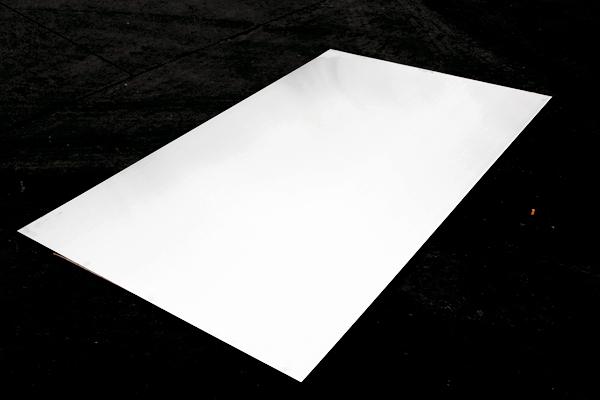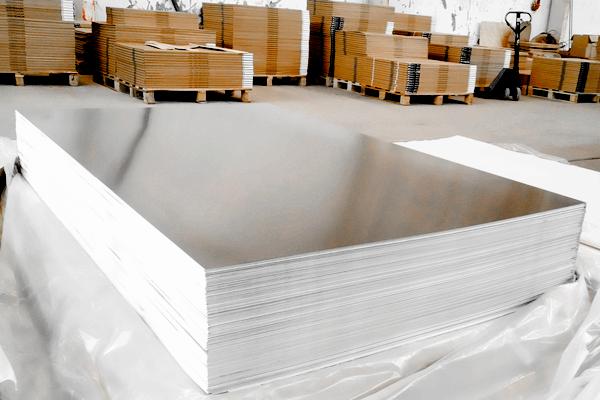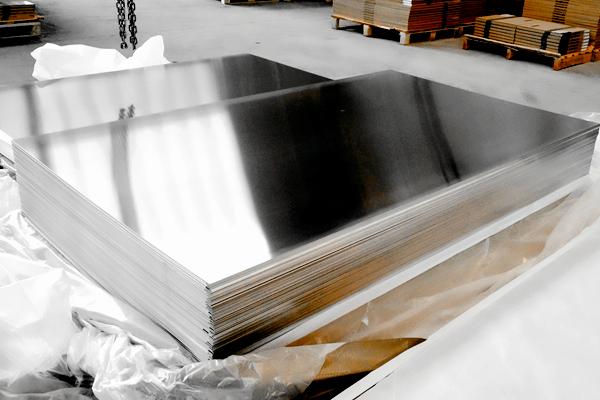If you are uncertain about selecting between 6061 and 6082 aluminum sheets, it is important to note that although both alloys belong to the 6xxx series, their differing compositions result in significant performance variations when used in sheet form.
6061 aluminum sheets contain 0.25% less silicon compared to 6082 (0.4-0.8% versus 0.7-1.3%), along with a more precise magnesium range (0.8-1.2% versus 0.6-1.2%). This leads to a 12% difference in yield strength between standard T6 temper sheets of the two alloys. Additionally, 6061 aluminum sheets exhibit excellent weldability and corrosion resistance, making them ideal for structural applications. In contrast, 6082 aluminum is stronger and more suitable for high-stress applications, such as bridge construction.

How do these metallurgical differences manifest in real-world sheet metal performance? Let us analyze their properties through tensile test data and industrial use cases.
What is 6061 Aluminum Sheet Used For?
Are you in need of a versatile sheet alloy suitable for both forming and machining? The well-balanced properties of 6061 aluminum make it an ideal choice for multi-process fabrication across various industries.
Aluminum is my preferred material for welding because it retains strength after manufacturing. In aerospace, it's used for lightweight and tough components like fittings and mounts. In automotive applications, aluminum is chosen for durable brake and valve components. Its rust-resistant properties make it ideal for marine structures and boat fittings. In construction, aluminum is favored for strong yet lightweight scaffolding and frames. It’s also used for bicycle frames and furniture due to its aesthetic appeal and ease of shaping. Heat treatment enhances its mechanical properties for specialized applications. In electronics, aluminum is valued for its conductivity, used in enclosures and heat sinks. I choose aluminum for prototyping and custom projects due to its availability and machinability. It’s also used in irrigation pipes and heat exchangers for its corrosion resistance and malleability. In medicine, aluminum is used for tools and prosthetics after surface treatment for biocompatibility. Additionally, anodizing or coating improves its durability and appearance, making it suitable for decorative purposes.
6061-T6 aluminum sheets, with thicknesses ranging from 2 to 150 mm, demonstrate superior performance in applications that demand excellent bendability and surface finish, such as aircraft fuselage panels, automotive body components, and bases for CNC-machined equipment.

Performance Comparison Table
Key metrics for sheet selection:
| Property | 6061-T6 Sheet | 6082-T6 Sheet |
|---|---|---|
| Typical Thickness Range | 0.5-150 mm | 1-200 mm |
| Bend Radius (for 1mm sheet) | 1.2t | 1.5t |
| Anodizing Quality | Grade A (Mil-A-8625) | Grade B |
| Machining Cost Index | 100 | 120 |
Industry Applications
- Electric Vehicles: 3mm 6061-T6 sheets formed into battery enclosures, achieving 15% weight reduction vs. steel
- Robotics: Laser-cut 6061 sheets for robotic arm mounts with 0.1mm positional accuracy
- Architecture: Perforated 6061-T651 sheets used in Sydney Opera House acoustic cladding
What is 6082 Aluminum Sheet Used For?
If your application demands maximum load-bearing capacity in thick sheets, the enhanced alloy formula of 6082 provides exceptional structural performance tailored for heavy-duty requirements.
6082 aluminum sheet is extensively utilized in transportation, construction, and high-stress applications due to its superior strength, corrosion resistance, and lightweight properties. It is particularly well-suited for bridges, cranes, and trucks, offering efficient fuel savings in vehicles such as truck frames, ships, and trains. In construction, it serves as a premier choice for bridges, towers, and cranes, capable of handling heavy loads effectively. Its corrosion resistance makes it highly suitable for outdoor and marine environments, including platforms. Compared to 6061 aluminum, 6082 contains higher levels of silicon and manganese, providing enhanced strength and hardness. This alloy is widely employed in high-speed trains, military vehicles, mining tools, and agricultural machinery where reliability is paramount. Although more expensive than 6061, its superior strength justifies the additional cost for demanding applications. Additionally, it performs admirably in electrical equipment and oil/gas sectors due to its conductivity and corrosion resistance. Notably, 6082-T6 sheets (3-250mm thickness) exhibit 25% greater compressive strength compared to 6061, making them ideal for bridge decking, crane beams, and offshore flooring.

Thick Sheet Performance Analysis
Critical parameters for structural sheets:
| Parameter | 6082-T6 Sheet | 6061-T6 Sheet |
|---|---|---|
| Maximum Recommended Thickness | 250 mm | 150 mm |
| Fatigue Strength (10⁷ cycles) | 125 MPa | 110 MPa |
| Charpy Impact (V-notched, 20°C) | 15 J | 10 J |
| Stress Corrosion Threshold | 200 MPa | 160 MPa |
Conclusion
Both 6061 and 6082 aluminum alloys sheets exhibit excellent properties, but they differ in terms of strength and application. For welding and corrosion resistance, 6061 aluminum alloy would be the preferred choice, while 6082 aluminum alloy is more suitable for demanding, high-stress applications.

